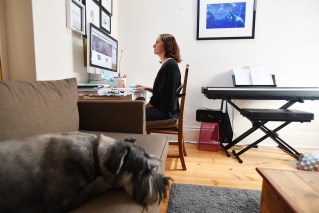Unemployment: Job ads are rebounding, but there’s more pain to come


Job ads are rebounding, but workers still face an uphill battle. Photo: The New Daily
The number of job ads has recovered since the height of the pandemic in April, but economists warn there’s more pain to come.
Employment website SEEK found the number of jobs advertised in the fortnight ending May 31 was 49.2 per cent higher than the average across April.
And in more promising news, the two previous fortnights also saw large jumps – up 39.7 per cent over the fortnight ending May 24, and 26.8 per cent over the fortnight ending May 17.
Queensland experienced the biggest percentage gains, with job ads at the end of May 62.5 per cent higher than the April baseline, followed by South Australia (up 59.1 per cent) and Victoria (up 58 per cent).
SEEK ANZ managing director Kendra Banks said the positive numbers were welcome, but cautioned the growth could soon taper off.
“Whilst this continued growth is positive, we are seeing signs that our job ad volume data is showing a slower rate of growth compared to the start of May,” she said.
“As we head into June, we traditionally see a slowing of job ad posting due to the end of the financial year, with a boost in July and August when budgets are reset.
“It will be interesting to see if the easing of restrictions, the economic measures put in place by the government and the new financial year translates to more jobs advertised in July.”
Future remains uncertain, especially for admin staff
Although the increase in job ads since April is good news for some, leading economists told The New Daily it’s far too early to predict when unemployment rates will return to pre-crisis levels.
“There is a huge degree of uncertainty surrounding Australia’s economic and employment outlook,” said Callam Pickering, Asia-Pacific economist with jobs site Indeed.
“The COVID-19 pandemic is likely to cause a long and lingering shadow over the Australian labour market and shape hiring decisions for the foreseeable future.”
Office support workers, such as personal assistants, secretaries and those in clerical roles, will be particularly vulnerable based on the experiences of past recessions.
Labourers, factory workers and machine operators “also tend to struggle” during downturns, Mr Pickering added.
The arts and hospitality sector also faces the prospect of mass businesses closures, resulting in more job losses in these sectors.
‘Worst labour market’ since Great Depression
Although some sectors could see increased demand for workers, Centre for Future Work director Dr Jim Stanford said the nation’s focus should be on the jobs that “aren’t going to come back”.
“We’re facing the worst labour market conditions since the Great Depression,” he told The New Daily.
The overwhelming focus of our thinking and our policy should be on trying to preserve the jobs we can, and implement job-creation policies where we can.”
Although the official unemployment rate was 6.2 per cent in April, this figure only accounts for unemployed people actively looking for work.
Dr Stanford said the actual percentage of Australians out of work is likely closer to 20 per cent.
And with the private sector looking to cut costs and preserve profit margins, the public sector will play a critical role in providing jobs for out-of-work Australians.

The unemployment rate hit 6.2 per cent in April and is tapped to climb higher. Photo: AAP
“That’s partly because we need those services but also because the public sector will have to fill a void left by the private sector,” Dr Stanford said.
Healthcare workers will make up a large portion of these new public sector jobs, he said, both in traditional roles and newly created positions like virus contact tracers.
The public sector might also need to hire more teachers and childcare workers, to help schools reduce class sizes so they can better observe social distancing requirements.
“Those changes aren’t inevitable though; we do have some political leaders that I worry will say our deficit is big because of the pandemic and try to cut spending,” Dr Stanford said.
“That would be the exact wrong thing to do and would take our recession and turn it into a depression.”








